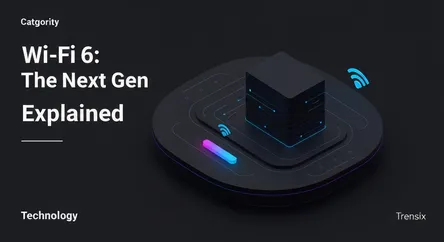Technology
Wi-Fi 6: The Next Gen Explained

Discover Wi-Fi 6 (802.11ax), the new wireless standard offering faster speeds, lower latency, and better performance in crowded network environments.
What is it?
Wi-Fi 6, technically known as 802.11ax, is the latest generation of the Wi-Fi network protocol. While it offers higher theoretical top speeds than its predecessor (Wi-Fi 5), its main innovation lies in efficiency. It's designed to improve performance in congested environments where many devices are competing for bandwidth. It achieves this using technologies like Orthogonal Frequency Division Multiple Access (OFDMA), which allows a single transmission to deliver data to multiple devices simultaneously, and improved MU-MIMO (Multi-User, Multiple-Input, Multiple-Output) to communicate with more devices at once.
Why is it trending?
The rise of the Internet of Things (IoT) and the proliferation of connected devices in the average household—from smartphones and laptops to smart TVs and security cameras—has put immense strain on older Wi-Fi standards. Wi-Fi 6 is trending because it directly addresses this congestion problem. As people upgrade to gigabit internet plans and adopt more smart gadgets, the need for a network that can handle the traffic without slowing down becomes critical. The widespread release of Wi-Fi 6 compatible routers and devices, including the latest smartphones and computers, is fueling its adoption.
How does it affect people?
For the average person, Wi-Fi 6 translates to a noticeably better online experience. It means smoother 4K or 8K video streaming, lag-free online gaming, and faster downloads, even when the entire family is online. It reduces buffering and latency by managing network traffic more intelligently. In public spaces like airports, cafes, and stadiums, it allows for a more stable and reliable connection for a large number of users. Ultimately, it future-proofs home and business networks, ensuring they can support the growing number of connected devices for years to come.